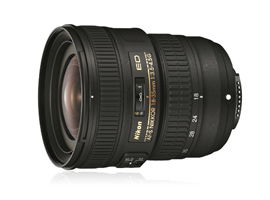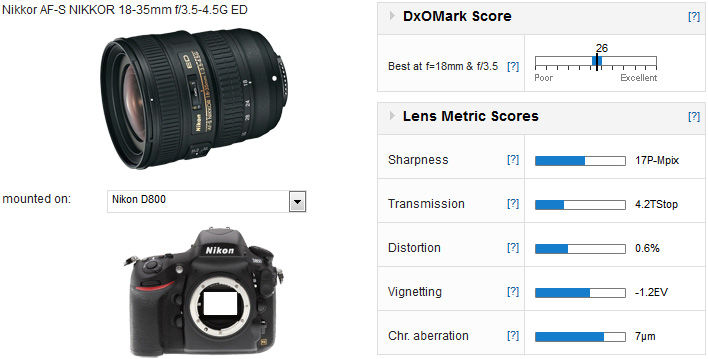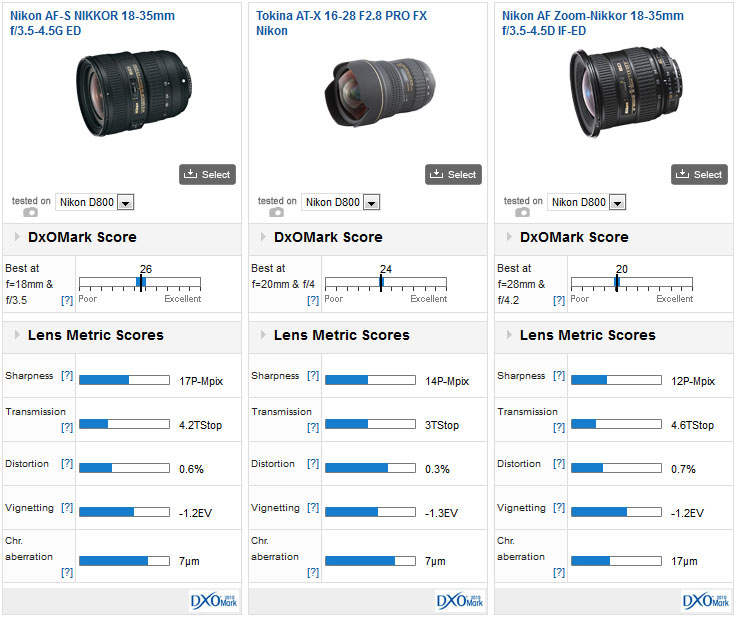Introduction
With a sweeping 74 to 29 degrees horizontal angle of view, this $750 full-frame ultra-wide zoom is an update to the compact yet film-era D-series model of the same focal range and focal ratio. As a G-series lens it will come as no surprise to learn the aperture ring is now controlled electronically from the camera. Internally, improvements to the optical design include two ED glass- and three aspherical-elements (up from one of each previously) bringing the total to 12 elements in eight groups. This lens also has an ultrasonic type AF motor (SWM in Nikon parlance) allowing easy switching between manual focusing and AF while also adding compatibility with recent DX-format camera bodies, such as the D5200 and D3200. As the equivalent to a 28-55mm on these cameras, this lens isn’t quite as compelling but it may be a useful combination nonetheless.
Nikon AF-S NIKKOR 18-35mm f/3.5-4.5G ED mounted on Nikon D800:
Achieving an excellent DxOmark score of 26 points overall mounted on the Nikon D800, the new 18-35mm is one of the best performing wide-angle zooms to pass through our labs. With a Sharpness score of 17P-Mpix, it’s one the highest scoring lenses of its type and features consistent sharpness across the field, from edge-to-edge. With the exception of some barreling at 18mm, distortion is very low while correction of lateral chromatic aberration is equally impressive for this type of lens. Vignetting, or corner-shading, is also well within the expected tolerances for an ultra-wide zoom.
Nikon AF-S NIKKOR 18-35mm f/3.5-4.5G ED Vs Tokina AT-X 16-28 F2.8 PRO FX Nikon Vs Nikon AF Zoom-Nikkor 18-35mm f/3.5-4.5D IF-ED all three mounted on Nikon D800:
When judged against the highly regarded $849 Tokina AT-X 16-28mm f/2.8 PRO FX and this model’s predecessor, the $610 AF Zoom-Nikkor 18-35mm f/3.5-4.5D IF-ED, this lens easily outperforms them in Sharpness. In fact, with a score of 17P-Mpix it matches the AF-S Nikkor 14-24mm f/2.8G ED. But this is not just about improvements in acutance and resolution levels. The most surprising aspect in a lens this wide is the consistency of sharpness across the frame. In fairness, the Tokina is the more extreme lens, being both ‘wider’ and ‘faster’, but there’s little doubt of the superiority of this lens over the earlier iteration.
With the price close to the Tokina, this new Nikon’s ‘moderate to slow’ variable aperture, all-plastic construction and lack of an aperture collar may all be viewed as shortcomings. Looking on the up-side, the material choice means the lens weighs just 385g and yet, even after adopting a large 77mm filter size, it somehow retains relatively compact dimensions making it highly portable. As for the optical quality, it’s first class and will no doubt be a good match for the inevitable high-resolution bodies that must surely exist on the drawing boards of Nikon facilities in Tokyo and Sendai.







DXOMARK encourages its readers to share comments on the articles. To read or post comments, Disqus cookies are required. Change your Cookies Preferences and read more about our Comment Policy.